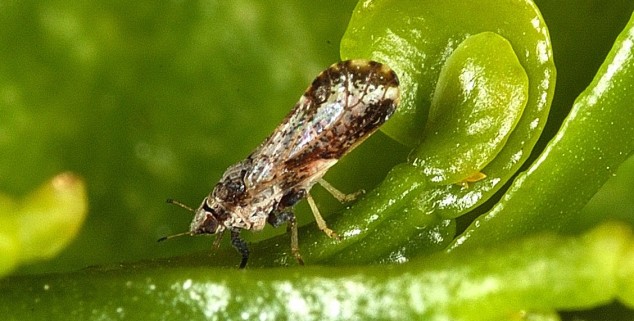News
Tiny pest prompts big concerns
 A tiny Asian citrus psyllid enjoying some eats. (Photo: UC Riverside)
A tiny Asian citrus psyllid enjoying some eats. (Photo: UC Riverside)It’s a barely visible, tiny insect but it could be a huge headache for California’s $2 billion citrus industry.
The Asian citrus psyllid, only few millimeters long, has turned up in the San Gabriel Valley and authorities are plotting a strategy to contain it.
The insect is known to be carrier of the deadly disease HLB, or Huanglongbing, also known as citrus greening. The disease kills citrus trees and there is no known cure.
California’s growers provide about 80 percent of the nation’s fresh citrus fruits.
This non-native disease is believed to be brought over from Asia. The first reported HLB case in the United States was in Florida in 2005.
In the San Gabriel Valley, a kumquat tree and a lime tree were infected with HLB. Although the number of infected trees seems small, authorities are taking action to avoid further contamination.
“Planning has begun for a quarantine of the area to limit the spread of the disease by restricting the movement of citrus trees, citrus plant parts, green waste, and all citrus fruit except what is commercially cleaned and packed”, the California Department of Food and Agriculture said in a written statement.
A case of HLB infection occurred once before in Southern California, when the disease was identified on a pumelo tree in Hacienda Heights in 2012.
California’s citrus fruit industry is worth about $2 billion annually. California’s growers provide about 80 percent of the nation’s fresh citrus fruits.
California Department of Food and Agriculture cites two ways to treat the problem. One is to remove the trees immediately and avoid further contamination. The other is to control the agents, which is the Asian citrus psyllid, with a combination of biological factors and insecticides.
Once a tree is infected with HLB, it will die within a few years, experts say. Symptoms can be slow to show, sometimes taking more than a year to mature. HLB symptoms in trees can be spotted by the irregular yellow mottling on both sides of the tree leaves.
California has a history of high-profile insect infestations, including the Mediterranean fruit fly, or medfly. The state has conducted aerial spraying to eradicate the medfly, which can threaten nearly two-dozen crops. The state also reduced the fast-breeding medfly populations by introducing sterile flies.
Want to see more stories like this? Sign up for The Roundup, the free daily newsletter about California politics from the editors of Capitol Weekly. Stay up to date on the news you need to know.
Sign up below, then look for a confirmation email in your inbox.

Leave a Reply